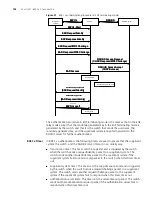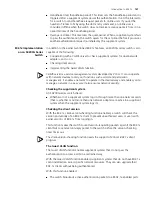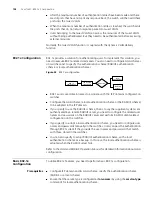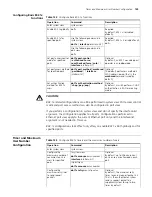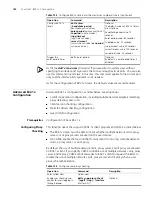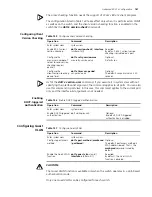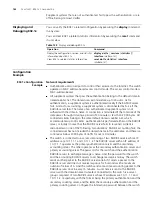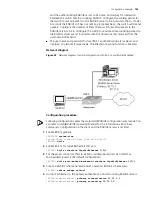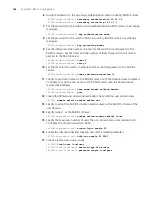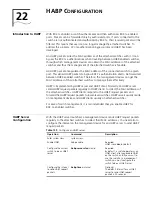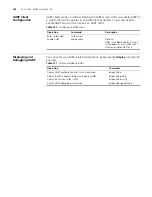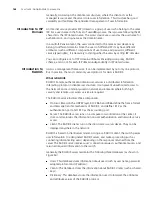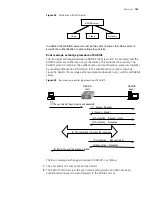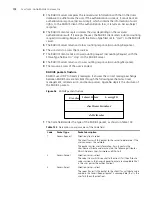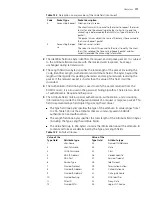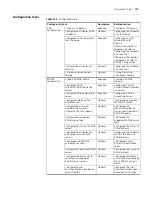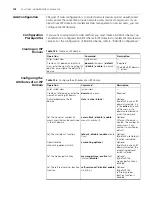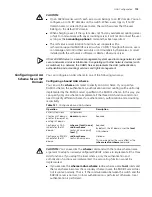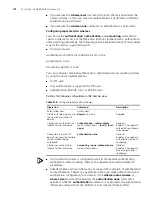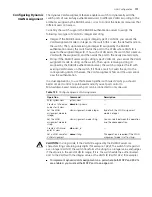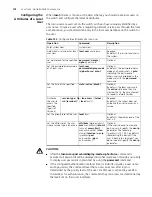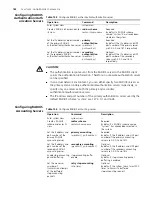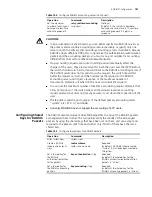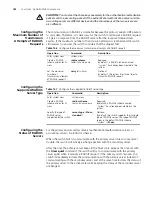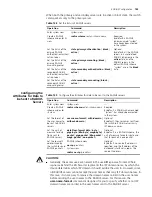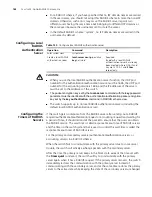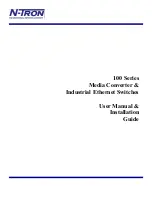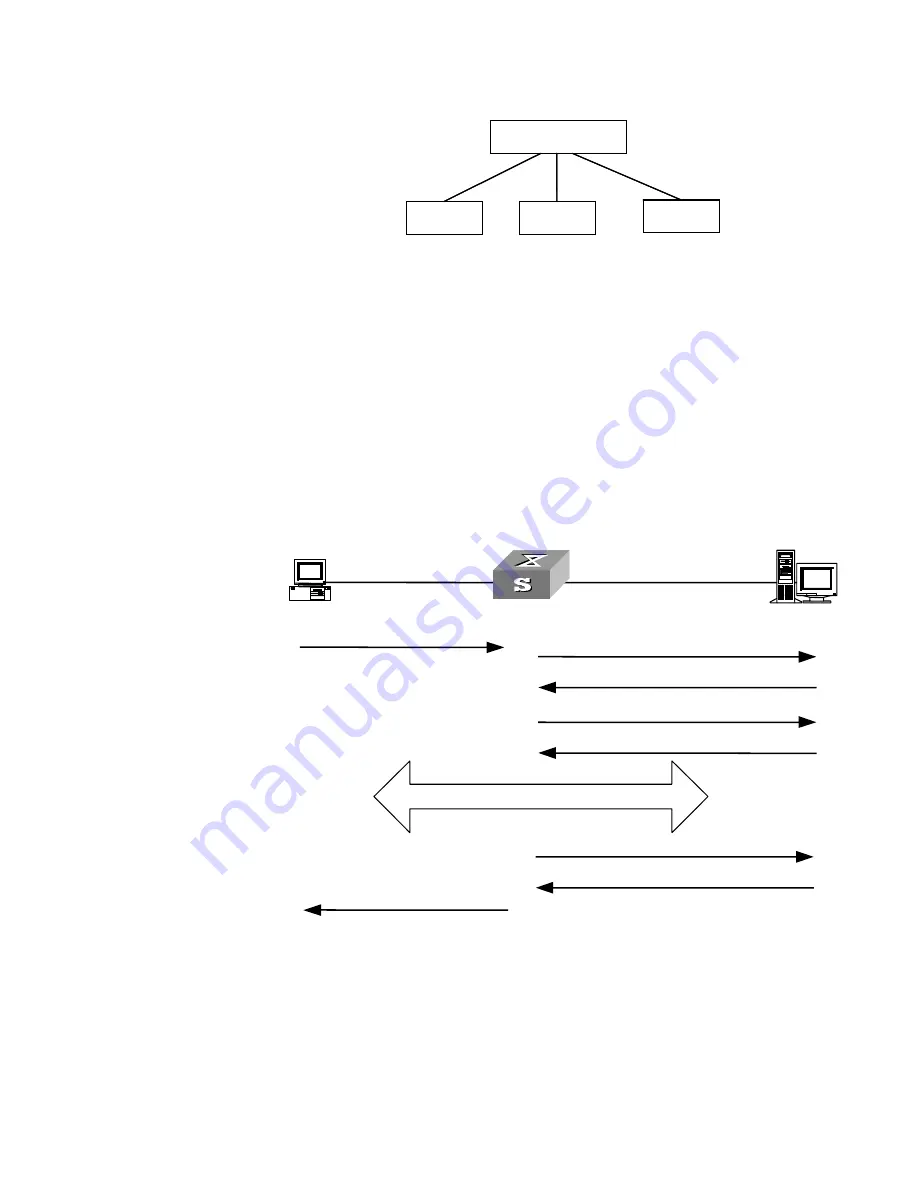
Overview
169
Figure 54
Databases in RADIUS server
In addition, the RADIUS server can act as the client of some other AAA server to
provide the authentication or accounting proxy service.
Basic message exchange procedure of RADIUS
The messages exchanged between a RADIUS client (a switch, for example) and the
RADIUS server are verified by using a shared key. This enhances the security. The
RADIUS protocol combines the authentication and authorization processes together
by sending authorization information in the authentication response message.
Figure 55 depicts the message exchange procedure between user, switch and RADIUS
server.
Figure 55
Basic message exchange procedure of RADIUS
The basic message exchange procedure of RADIUS is as follows:
1
The user enters the user name and password.
2
The RADIUS client receives the user name and password, and then sends an
authentication request (Access-Request) to the RADIUS server.
RADIUS server
Users
Clients
Dictionary
RADIUS server
Users
Clients
Dictionary
RADIUS
Server
(1) The user inputs the user name and password
(2)
Access -Request
PC
RADIUS
Client
(3) Access -Accept
(4) Accounting -Request (start)
(5) Accounting -Response
(7) Accounting - Request (stop)
(8) Accounting - Response
(9) Inform the user the access is ended
(6) The user starts to access the resources
RADIUS
server
(1) The user inputs the user name and password
(2)
Access -Request
PC
RADIUS
client
(3) Access -Accept
(4) Accounting -Request (start)
(5) Accounting -Response
(7) Accounting - Request (stop)
(8) Accounting - Response
(9) Inform the user the access is ended
(6) The user starts to access the resources
RADIUS
Server
(1) The user inputs the user name and password
(2)
Access -Request
PC
RADIUS
Client
(3) Access -Accept
(4) Accounting -Request (start)
(5) Accounting -Response
(7) Accounting - Request (stop)
(8) Accounting - Response
(9) Inform the user the access is ended
(6) The user starts to access the resources
RADIUS
server
(1) The user inputs the user name and password
(2)
Access -Request
PC
RADIUS
client
(3) Access -Accept
(4) Accounting -Request (start)
(5) Accounting -Response
(7) Accounting - Request (stop)
(8) Accounting - Response
(9) Inform the user the access is ended
(6) The user starts to access the resources
Summary of Contents for 4200G 12-Port
Page 10: ...8 CONTENTS...
Page 14: ...4 ABOUT THIS GUIDE...
Page 46: ...32 CHAPTER 5 LOGGING IN THROUGH WEB BASED NETWORK MANAGEMENT SYSTEM...
Page 48: ...34 CHAPTER 6 LOGGING IN THROUGH NMS...
Page 60: ...46 CHAPTER 9 VLAN CONFIGURATION...
Page 64: ...50 CHAPTER 10 MANAGEMENT VLAN CONFIGURATION...
Page 80: ...66 CHAPTER 13 GVRP CONFIGURATION...
Page 98: ...84 CHAPTER 15 LINK AGGREGATION CONFIGURATION...
Page 112: ...98 CHAPTER 18 MAC ADDRESS TABLE MANAGEMENT...
Page 126: ...112 CHAPTER 19 LOGGING IN THROUGH TELNET...
Page 162: ...148 CHAPTER 20 MSTP CONFIGURATION...
Page 274: ...260 CHAPTER 29 IGMP SNOOPING CONFIGURATION...
Page 276: ...262 CHAPTER 30 ROUTING PORT JOIN TO MULTICAST GROUP CONFIGURATION...
Page 298: ...284 CHAPTER 33 SNMP CONFIGURATION...
Page 304: ...290 CHAPTER 34 RMON CONFIGURATION...
Page 338: ...324 CHAPTER 36 SSH TERMINAL SERVICES...
Page 356: ...342 CHAPTER 38 FTP AND TFTP CONFIGURATION...
Page 365: ...Information Center Configuration Example 351 S4200G terminal logging...
Page 366: ...352 CHAPTER 39 INFORMATION CENTER...
Page 378: ...364 CHAPTER 40 BOOTROM AND HOST SOFTWARE LOADING...
Page 384: ...370 CHAPTER 41 Basic System Configuration and Debugging...
Page 388: ...374 CHAPTER 43 NETWORK CONNECTIVITY TEST...
Page 406: ...392 CHAPTER 45 CONFIGURATION OF NEWLY ADDED CLUSTER FUNCTIONS...


